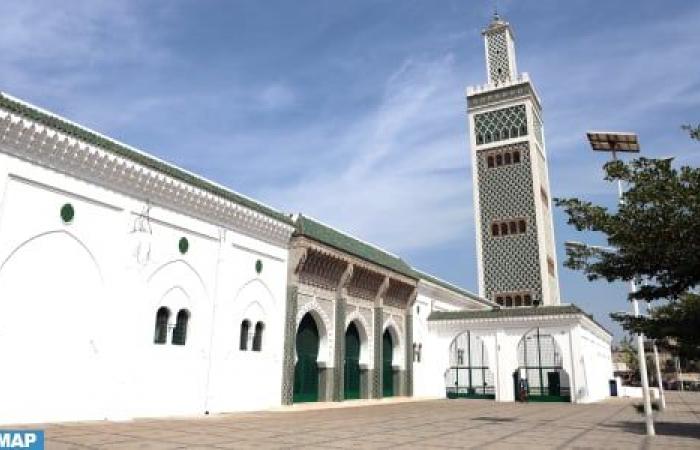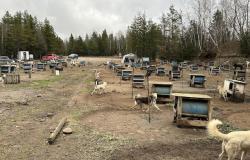
Thursday, November 21, 2024 at 12:45 p.m.
Dakar – Built in the heart of the Senegalese capital, the Great Mosque of Dakar, which celebrates this year the 60th anniversary of its construction, is an architectural jewel which testifies to the depth of the spiritual relations existing for many years between Morocco and Senegal .
Inaugurated on March 27, 1964 by the late HM King Hassan II, on the occasion of his official visit to Senegal, and the first president of Senegal, the late Léopold Sédar Senghor and the Caliph General of Tijanes, El Hadj Abdoul Aziz Sy Dabakh, the Great Mosque of Dakar is a building completely integrated into the architectural and urban fabric of the Senegalese capital where it is considered one of the most important buildings in this West African country.
Classified as historical heritage, the Great Mosque of Dakar testifies above all to the fruitful and mutually beneficial cooperation between the Kingdom of Morocco and the Republic of Senegal, two model countries of a centuries-old partnership.
In the wake of this partnership, Morocco and Senegal signed a framework partnership agreement relating to the management and development of the Great Mosque.
The said agreement aims in particular to allow this establishment to benefit from Moroccan expertise in the management of mosques and the qualification of imams.
The building, designed according to Moroccan architecture, and very visible from afar thanks to its minaret culminating at 67 meters, has a prayer room that can accommodate up to 30,000 faithful, and classrooms for teaching the Arabic language. and other prayer spaces dedicated to women.
The mosque compound located on Allée Pape Guèye Fall in the capital Dakar, also includes the Islamic Institute of Dakar, created in 1974 as a center for teaching and research on Islam.
Directed exclusively by imams from the Lébou community, this establishment known for its water jets, its arcades and its decorations which inevitably take us back to the kingdom of Morocco where beautiful mosques are an integral part of the city’s decor, is home to the largest Muslim ceremonies in the capital, from Senghor to the present day, notably the prayers of the festivals of Aid El fitr and Aid Al Adha and the tarawihs of the holy month of Ramadan.
The building which indeed offers a privileged haven of meditation to Senegalese Muslims does not go unnoticed. A symbol of the purity and refinement of the Muslim faith, it contains the secrets of the large “Léboue” community. According to Senegalese scholars, one becomes Imam of the great Mosque of Dakar by merit. “It is a title that belongs to no family, but you have to be a scholar to be designated by your peers,” we justify to this Lebou community. The first criterion that must be mastered is the Koran. Then comes age. You must also be Lebou, with parents from the community and capable of reading the Koran and the various works which explain the Islamic rules, it is explained.
Since its inauguration in 1964, the Great Mosque of Dakar has had three Ratib Imams, all Lebous. They are El Hadj Amadou Lamine Diène, El Hadj Maodo Sylla and El Haj Alioune Moussa Samb, all three of whom are close relatives.
On the occasion of the celebration of the 60th anniversary of the construction of the Great Mosque of Dakar in Senegal, the Mohammed VI Foundation of African Ulema is celebrating, from November 22 to 24, this great event, the aim being the strengthening of spiritual and historical relations between the Kingdom of Morocco and the Republic of Senegal.
This commemoration will include the organization, Friday and Saturday, of an international conference under the theme “the values of peace and living together in the African context”, with the participation of a college of scholars and experts from Kingdom of Morocco, Republic of Senegal and other African countries. An exhibition of written and visual documents, retracing the historical and architectural dimensions of this religious building, is planned for the occasion.





